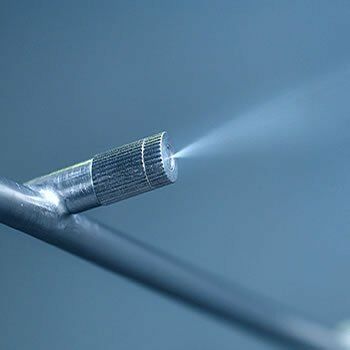Greenhouse Air Conditioning Systems

Note: The most important system element that sprays water in the form of mist in cooling systems or humidification systems is the spray tips called nozzles . This part, whose original English name is "nozzle", is also sought in the market with names such as irrigation nozzle, water spray nozzle, fogging nozzle. Nozzles can have jack or threaded connections for integration into the system. There is also an anti-drip mechanism called check valve (anti-drip). Nozzles have different tip types (orrifice diameter) between 10 microns and 80 microns. As the hole diameter decreases, the amount of water sprayed decreases and naturally a much finer misting occurs. However, as the hole diameter decreases, clogging increases. Fortunately, nozzles are cleanable products. It can be used many times by cleaning it regularly. Clogging depends on the quality of the water. Depending on the amount of lime in the water, the clogging time of the spray nozzles also decreases. If the water quality is good in your area, you can choose even the thinnest tip without hesitation.
As a result: " Nozzle hole diameter selection should be made considering that nozzles with small hole diameter deliver thinner water to the environment, but the clogging increases accordingly, and as the hole diameter increases, they produce relatively thicker fogging but the clogging decreases."
For example, for an environment where the humidity is very low and the temperature is very high; A nozzle with a hole diameter of 0.5 mm reaches the air saturation point when it operates for 5 seconds, while a nozzle with a diameter of 0.2 mm reaches the saturation point when it operates for 10 seconds.
Spraying distances and spray angles are also important parameters for wetness. If the spraying atomized water particles hit a surface, condensation - wetness will also occur. To prevent this, the application height and position of the tips must be correct. According to this information, the layout plan should be taken into consideration and the nozzle selection should be made.
In the same example above, if it is desired to use it for a long time without clogging in the nozzle, and if the positioning of the tips in the layout plan provides a suitable distance for condensation, 0.3 tips can also be preferred. In this way, a system that requires less cost and less maintenance can be designed by using fewer fittings.
